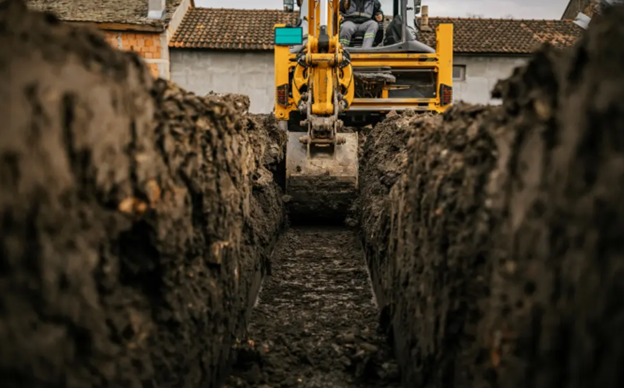The consequences of excavating without verifying subsurface conditions are well-documented: costly utility strikes, project delays, service disruptions, injuries, and fatalities. Yet according to a national survey conducted by the Common Ground Alliance (CGA), 46% of Americans still plan to dig without contacting 811.

Excavation Risks and the Critical Role of Accurate Subsurface Documentation
Released during National Safe Digging Month in April, CGA’s survey highlights persistent misconceptions about excavation safety. The findings reveal that while 68% of Americans intend to tackle a do-it-yourself digging project within the next year, 27.2 million individuals will not contact 811 beforehand.
This failure to follow established protocol not only violates the law—homeowners and contractors are legally required to notify 811 before starting any excavation project—but also places lives and infrastructure at risk.
"Our survey found that 46% of Americans don't plan to notify 811 before digging, with most believing their project is too shallow to merit an 811 request," said CGA President and CEO Sarah K. Magruder Lyle. "This misconception puts homeowners and their neighbors at risk of injury and utility service interruptions. The reality is that utility lines can be buried just inches below the surface, which is why everyone must contact 811 before every digging project – whether it's installing a patio or major construction."
For excavation contractors, these findings reinforce the absolute necessity of rigorous site assessment before beginning any ground disturbance. Underground infrastructure – including electric, water, gas, sewer, and telecommunications lines – can exist at shallow depths regardless of property familiarity or project size.
Standard Protocol: Always Contact 811 Before Digging
Before any excavation, contractors must contact 811 a few days in advance to have the approximate locations of underground utilities marked with paint, flags, or both. Whether planning residential, commercial, or large-scale industrial excavation, adherence to the following best practices is non-negotiable:
- Always contact 811 before digging, regardless of the intended depth or familiarity with the site.
- Plan ahead by submitting a free locate request early in the week for upcoming weekend work.
- Verify that all lines have been accurately marked and documented prior to mobilizing excavation equipment.
- Adjust project plans as needed to maintain safe clearance from marked utilities.
- Confirm that hired contractors have contacted 811 and that utility marks are clearly in place before allowing excavation to proceed.
Upon contacting 811, contractors are connected to a local One Call Center, which coordinates with utility owners to dispatch professional locators. These technicians mark the approximate locations of underground utilities using standardized color codes for easy identification. Excavators must dig carefully around these marked areas using appropriate techniques, such as soft digging or vacuum excavation, where necessary.
The Limitations of 811 and Why Professional Utility Locating Is Essential
While 811 services provide a critical first step, professional excavators understand that public locates are limited in scope. One Call Centers typically locate and mark only the utilities owned and operated by public service providers. Private utilities – which include systems like water lines past a property’s meter, private electric services, gas distribution lines for campuses, and telecommunications infrastructure inside commercial properties – are often excluded from 811 locates.
Excavating based solely on public utility marks leaves significant gaps in situational awareness. Striking an unmarked private line can cause severe injuries, regulatory violations, and major project disruptions.
To fully protect workers, assets, and timelines, professional excavation contractors must supplement 811 locates with comprehensive private utility locating.
How GPRS Complements and Enhances 811 Locates
GPRS, the nation’s leading private utility locating company, provides precise subsurface documentation beyond the reach of 811 services. With a verified accuracy rate exceeding 99.8%, GPRS Project Managers bridge the critical data gap between public and private infrastructure.
Utilizing ground penetrating radar (GPR) and electromagnetic (EM) locating equipment, GPRS Project Managers identify and map all buried utilities within a project site, whether public, private, metallic, or non-metallic. Their Subsurface Investigation Methodology (SIM) certification ensures consistency, repeatability, and full regulatory compliance across all sites.
GPR transmits radio waves into the ground to detect subsurface anomalies such as pipes, conduit, and tanks, displaying hyperbolas on a readout that trained Project Managers interpret for accurate depth and location mapping. EM locating detects electromagnetic fields generated by conductive utilities, whether energized lines, passive signals, or transmitter-induced currents. Together, these technologies provide a multi-modal, layered assessment of subsurface conditions that public locates alone cannot deliver.
In addition, GPRS integrates this data into SiteMap®, a cloud-based infrastructure and project management platform. Accessible from any device, SiteMap® serves as a centralized record of verified existing conditions, allowing excavators, general contractors, and facilities managers to plan, dig, and build with confidence.
Risk Mitigation Through Verified Documentation
By supplementing 811 with GPRS private utility locating services, excavation contractors significantly reduce the risk of utility strikes, enhance site safety, and protect project schedules and budgets. Verified existing conditions documentation is not a luxury, it is an operational necessity.
Failure to obtain full subsurface information before excavation exposes contractors to OSHA violations, costly repairs, third-party liability claims, reputational damage, and worker injuries. Conversely, proactive investment in accurate utility mapping positions contractors as responsible stewards of safety and infrastructure integrity.
Digging Without Data Is Digging Blind
The CGA’s survey underscores a persistent misunderstanding about excavation risk that extends from homeowners to professional contractors. Assumptions based on project scale, site familiarity, or perceived depth are dangerous and legally insufficient.
Excavators must treat subsurface conditions as unknown until proven otherwise through proper 811 notifications and private utility locating. GPRS and SiteMap® provide the verified data needed to excavate safely, efficiently, and legally.
What can we help you visualize?
